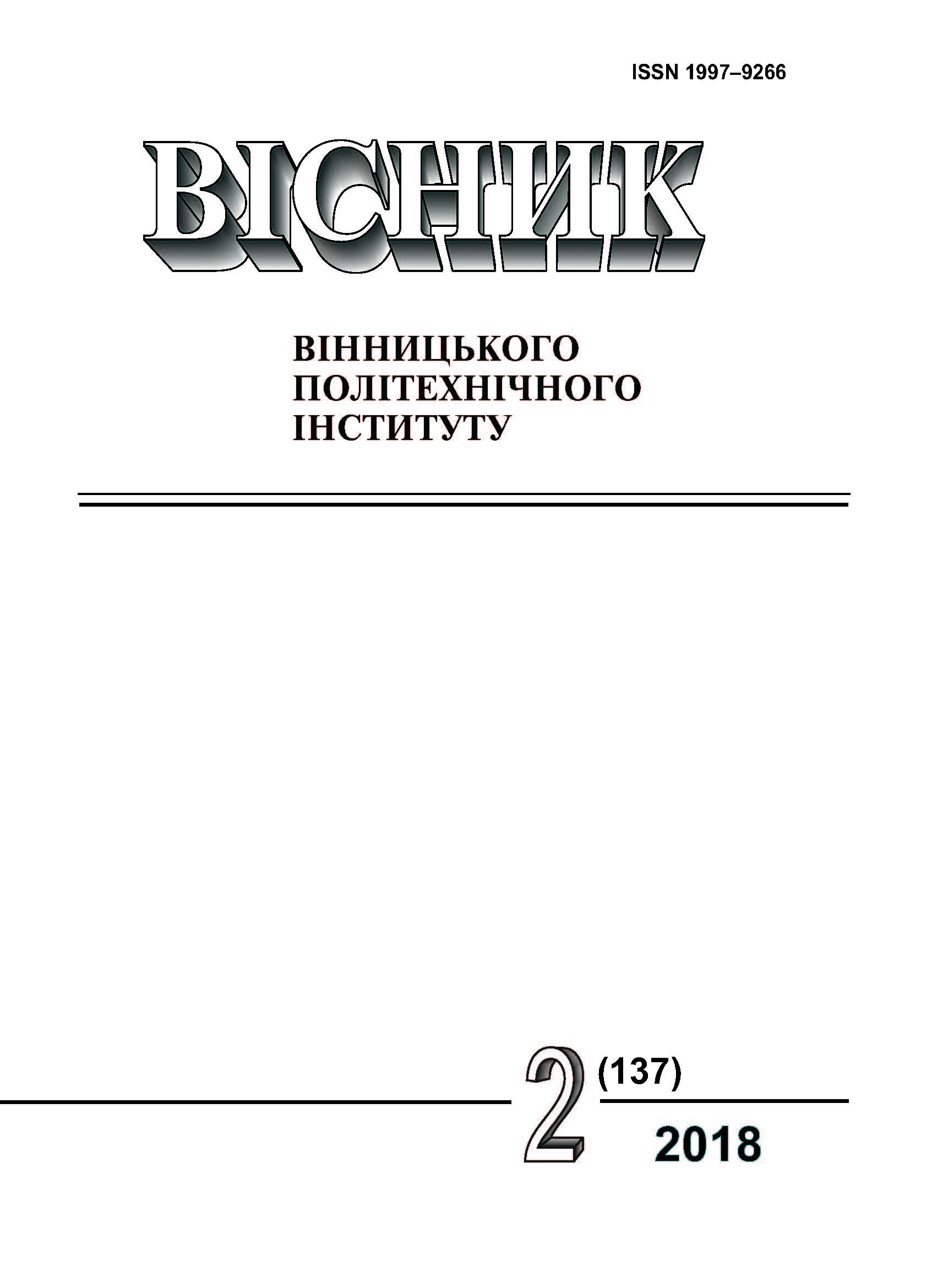Improvement of Mathematical Model of Calculation and Power Loss Forecasting on the Basis of Neural Networks
Keywords:
forecasting, power losses, neural networks, mathematical modelingAbstract
Power losses in power networks are the most important indicator of their efficiency, a clear indicator of the state of the electricity accounting system, and the efficiency of energy supplying organizations.
According to international experts, electricity losses during transmission and distribution in electricity networks of most countries can be considered satisfactory if they do not exceed 4-5%. Electricity losses at the level of 10% can be considered the maximum permissible from the point of view of the physics of electricity transmission over networks. The sharp aggravation of the problem of reducing electricity losses in electric networks requires an active search for new ways of its solution, new approaches to choosing appropriate measures and organizing work to reduce losses.
Today, the main formalized means of analyzing the functioning and control of the grid modes is mathematical modeling, the basis of which is a set of mathematical models that adequately reflect the processes being investigated. Increasing the complexity of the power grids, the tendency to a comprehensive consideration of the processes occurring in them, the strengthening of the requirements for the efficiency of calculations leads to objective difficulties in constructing and applying traditional multidimensional nonlinear mathematical models. Need to revise and improve the classical mathematical models of calculation and forecasting of electricity losses that are obsolete and do not meet current requirements. Their use is ineffective and partially impossible. In addition, they work poorly with partial lack of input information. This substantiates the need for the introduction of modern mathematical models (in particular, neural networks) to improve the calculation and forecasting of electricity losses in the power lines of power grids.
For the calculation and forecasting of electricity losses in domestic networks at present, deterministic and probabilistic statistical methods are considered to be the most prevalent.
References
Кабiнет Мiнiстрiв України, Пост. №. 148 від 05.02.1997, Комплексна державна програма енергозбереження України. [Електронний ресурс]. Режим доступу: http://zakon3.rada.gov.ua/laws/show/148-97-%D0%BF .
B. Hamid, and M. Walter, “Automated load forecasting using neural networks,” in Proc. Amer. Power Conf., Chicago, vol. 54, pp. 1149-1153., 1992.
P. C. Gupta, and K. Yamada, “Adaptive short–term forecasting of hourly loads using weather in formation,” IEEE Transactions on Power Apparatus and Systems, vol. PAS-91, Issue 5, pp. 2085-2094, 1972. doi: 10.1109/tpas.1972.293541.
V. Panuska, “Short-term forecasting of electric power system load from a weather dependent model,” IFAC Symp.1977. autom. contr. and prot. electr. power syst., Melbourne, pp. 414–418, 1977.
П. Ю. Красовський, «Фактори, що впливають на динаміку технічних втрат у лініях електропередач,» Праці Дніпропетровського національного гірничого університету, № 3, 2006.
А. А. Мирошник, «Уточненные алгоритмы расчета потерь электроэнергии в сетях 0,38 кВ в реальном времени,» Проблемы региональной энергетики, т. 2, № 13, с. 35-42, 2010.
С. В. Турбін, «Удосконалення методів визначення кліматичних навантажень на повітряні лінії з урахуванням топографічних особливостей місцевості,» Енергетика та електрифікація, № 10, c. 3-9, 2007.
В. Э. Воротницкий, и О. В. Туркина, «Оценка погрешностей расчета переменных потерь электроэнергии в ВЛ из-за неучета метеоусловий», Энергосистемы и электрические сети, No. 10, 2008.
И. И. Левченко, «Нагрузочная способность и мониторинг воздушных линий электропередачи в экстремальных погодных условиях,» Электричество, № 4, с. 2-8, 2008.
Ю. С. Железко, «Потери электроенергии в электрических сетях, зависящие от погодных условий,» Электрические станции, № 11, 2004.
Міністерство енергетики та вугільної промисловості України, пост. № 532, 2011. Методика визначення технологічних витрат електроенергії у трансформаторах і лініях електропередавання. [Електронний ресурс]. Режим доступу: http://www.mega-billing.com/files/metodika_vtrat.pdf .
Ф. П. Говоров, и Т. А. Диалло, «Оценка риска нестабильности напряжения в электрических сетях,» Техн. електродинаміка. Тем вип. «Проблеми сучасної електротехніки,» Київ, № 7, с. 46-49, 2004.
Ф. П. Говоров, и Т. А. Диалло, «Управление режимами электрических сетей с учётом риска нестабильности напряжения,» Техн. електродинаміка. Тем. вип. «Силова електроніка та енергоефективність,» Київ, № 1, с. 107-111, 2004.
V. Bakulevskiy, “Research into the influence of climatic factors on the losses of electric energy in overhead power transmission lines,” Eastern-European Journal of Enterprise Technologies, vol. 5, Issue 8 (83), 2016. doi: 10.15587/1729-4061.2016.80072.
В. Л. Бакулевський, «Розробка алгоритму програмної реалізації моделі прогнозування технічних втрат електроенергії в повітряних лініях електропередачі напругою 6-35 кВ,» в Матеріали V заочної наукової конференції «Наукові підсумки 2016 р. ,» ScienceRise, вип. 12/2 (29), с. 6-10, 2016.
В. Л. Бакулевський, «Тестування програмного забезпечення розрахунку технічних втрат електроенергії в повітряних лініях електропередач напругою 6-35 кВ», Вісник національного технічного університету ХПІ. Серія: «Механіко-технологічні системи та комплекси,» вип. 50 (122), с. 55-62, 2016.
Downloads
-
PDF (Українська)
Downloads: 165
Published
How to Cite
Issue
Section
License
Authors who publish with this journal agree to the following terms:
- Authors retain copyright and grant the journal right of first publication.
- Authors are able to enter into separate, additional contractual arrangements for the non-exclusive distribution of the journal's published version of the work (e.g., post it to an institutional repository or publish it in a book), with an acknowledgment of its initial publication in this journal.
- Authors are permitted and encouraged to post their work online (e.g., in institutional repositories or on their website) prior to and during the submission process, as it can lead to productive exchanges, as well as earlier and greater citation of published work (See The Effect of Open Access).





